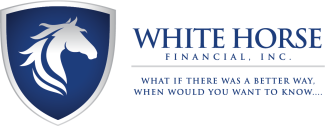Retirement Planning
Retirement planning today has taken on many new dimensions that never had to be considered by earlier generations. For one, people are living longer. A person who turns 65 today could be expected to live as many as 30 years in retirement as compared to a retiree in 1950 who lived, on average, an additional 15 years. Longer life spans have created a number of new issues that need to be taken into consideration when planning for retirement. Most importantly a guaranteed lifetime income that doesn’t rely on hope or the government.
Why Cash Flow Is More Critical Than Net Worth
After a friend of mine lost 35% of his life savings, and his father lost over 1 million dollars in the market crash of 2008 (after he had already retired)…I decided there had to be a better way to build wealth than gambling in the Wall Street casino.
I was blessed that my business had brought me into contact with some wealthy folks. These were ‘millionaire next door’ type people who were doing well despite the market crash.
They weren’t driving Lamborghinis and living in mansions (at least not most of them). They were hard working, freedom loving, Americans who had found some secrets to building wealth without counting on the stock market.
As I traveled the country to meet and learn from them, I was introduced to a whole new way of thinking about, making, and protecting my wealth.
I want to share with you the lessons I learned from my great ‘millionaire next door’ mentors.
The first paradigm shift for me came in the form of realizing what is true financial independence.
One of my mentors taught me his definition of financial independence, it was really very simple. Financial Independence is having a passive income that covers my expenses and gives me the freedom to enjoy life, enjoy my hobbies, and live a life of my choosing.
It wasn’t just about having a big nest egg or a big net worth.
The truth is, more and more people are realizing that a big nest egg doesn’t do you any good if you can lose half of it any time the market crashes, or you have to pay tons of taxes on it when you access it.
In fact INCOME or ‘cash flow’ is the new and correct focus for true financial independence.
When I started my business I had an income goal to make $300,000 per year. At the age of 28 this was a big number for me and I worked hard to achieve that.
But I started asking myself a question: What happens to my wife and 2 kids at the time if I can’t work anymore? I’m not dead, so they don’t get my life insurance, but I’m disabled to the point where I can’t work. That $300,000 is earned income. When I stop earning it, it stops coming.
Having a cash flow that comes in each and every month regardless of if you go to work or not…is much more secure.
How much food, travel or luxury can you buy with a net worth on a balance sheet?
Does the fancy resort or the BMW dealership take ‘net worth’ in exchange for their services?
No of course not. They take currency, either cash or credit which is another form of cash. Nobody is buying a BMW 7 series or Porsche with a balance sheet showing how much their land is worth.
My mentor taught me I don’t need net worth or a ‘nest egg’ as much as I need cash flow for the rest of your life to live truly wealthy.
There’s a fundamental fallacy in the Wall Street teachings that lead people to the conclusion they should be focused on a nest egg number.
It’s called the 4% rule.
Let’s say I do have a 1 million dollar nest egg, and I want this to provide an income for life… (1 million may be well out of reach for many Americans, but let’s take a best case scenario and assume we’ve got a million to work with).
The 4% rule says I should be able to take 4% of your nest egg in income and have it last for the rest of my life.
Well, 4% of $1,000,000 is $40,000. I still have to pay tax on this because it’s more than likely in a 401(k) or IRA. Assuming tax rates are the same, I’ll pay 15% federal and about 6% state, unless you live in a state with no income tax.
That puts me at about $31,600 or just over $2,600 per month. I don’t know about you, but that doesn’t sound too exciting for a retirement income.
Now what happens if my $1,000,000 takes a 30% hit during a market crash during my retirement. Now I’ve got $700,000. Now my monthly income is down to $1,843. Maybe I’m a bigger spender than you, but that’s just not going to cut it for me.
I’m not the only one saying the 4% rule is broken. Now even the investing publications are saying it doesn’t work.
The reason the 4% rule doesn’t work is because of something called “The Sequence of Returns.”
Your nest egg and retirement income can vary greatly depending on whether the market goes up or down in the first couple years of your retirement. For example if you take the exact same sequence of returns, with some ups and some downs, the sequence with your withdrawals starting in an up market (High early returns) your money would last 37 years. If you started withdrawals in a down market (low early returns) your money would only last 24 years.
This means your retirement could have run out 13 years sooner, just by the luck of the draw.
You can’t guess what the market will do once you retire. You basically hope it goes up not down, once you retire. This is pretty silly considering the very nature of the market is boom…then bust. It’s an ongoing cycle that is basically guaranteed to go up and down.
So following the “Nest Egg” retirement strategy, at this point you are simply ‘hoping for the best’…and hope is not a strategy.
If you are one of the unlucky ones to retire in a down market, it could cost you big time.
When I realized this it helped me make a major paradigm shift in my thinking. My goal was no longer to just make a certain ‘income level.’ It was to generate a passive income that my family was able to live on should the worst happen.
So when I discovered the Private Reserve Strategy using the index crediting method I was excited because I wasn’t hoping anymore, I had certain guarantees that my money wouldn’t be lost when the market went down.
Check This Out…
I wanted to compare how a $1,000,000 nest egg in the stock market compared to the cash flow in a PRS that had $1,000,000 in cash value.
Remember the stock account after tax would produce about $31,000 after tax income to last until age 100 (Assuming the best case scenario in the sequence of returns).
Assuming 6.75% growth (which is pretty conservative for me) the PRS would put out $110,900 tax advantaged (no income tax) cash flow until I hit age 100.
Talking pre-tax money, the stock account produced $40,000, factoring current tax rates the $110,000 in tax advantaged money would be closer to $145,000 in pre-tax income.
This is why the PRS has become such a popular retirement strategy, plus the fact that it has an insurance and potentially a long term care benefit included, you are getting much more for your money.
Most people don’t use this as their only retirement strategy, I certainly don’t. I also use real estate, precious metals, and businesses to build my wealth…but I do sleep better at night knowing if all my other investments crash and burn, I have a safety net of at least a 6 figure, tax-advantaged income ready for me and my family when I retire.

